Update 03.07.2018 -- Run 9 pp: Efficiency, Adjusting DCA, IdVxEnd, and PID Selection
Previously, I was looking into why our tracking efficiency in the Run 9 dijet embedding was so low. We were expecting somewhere between 85~90% for high pT, but we were seeing ~80% or less. Until now, I've been using a DCA cut of 1 cm which cuts out a significant number of tracks for pT < 1 GeV/c (the bottom end of what we'd like to report). See this post:
https://drupal.star.bnl.gov/STAR/blog/dmawxc/update-02272018-idtruth-and-etc-vs-momentum
So I opened up the DCA cut to 3 cm, and this is the result:
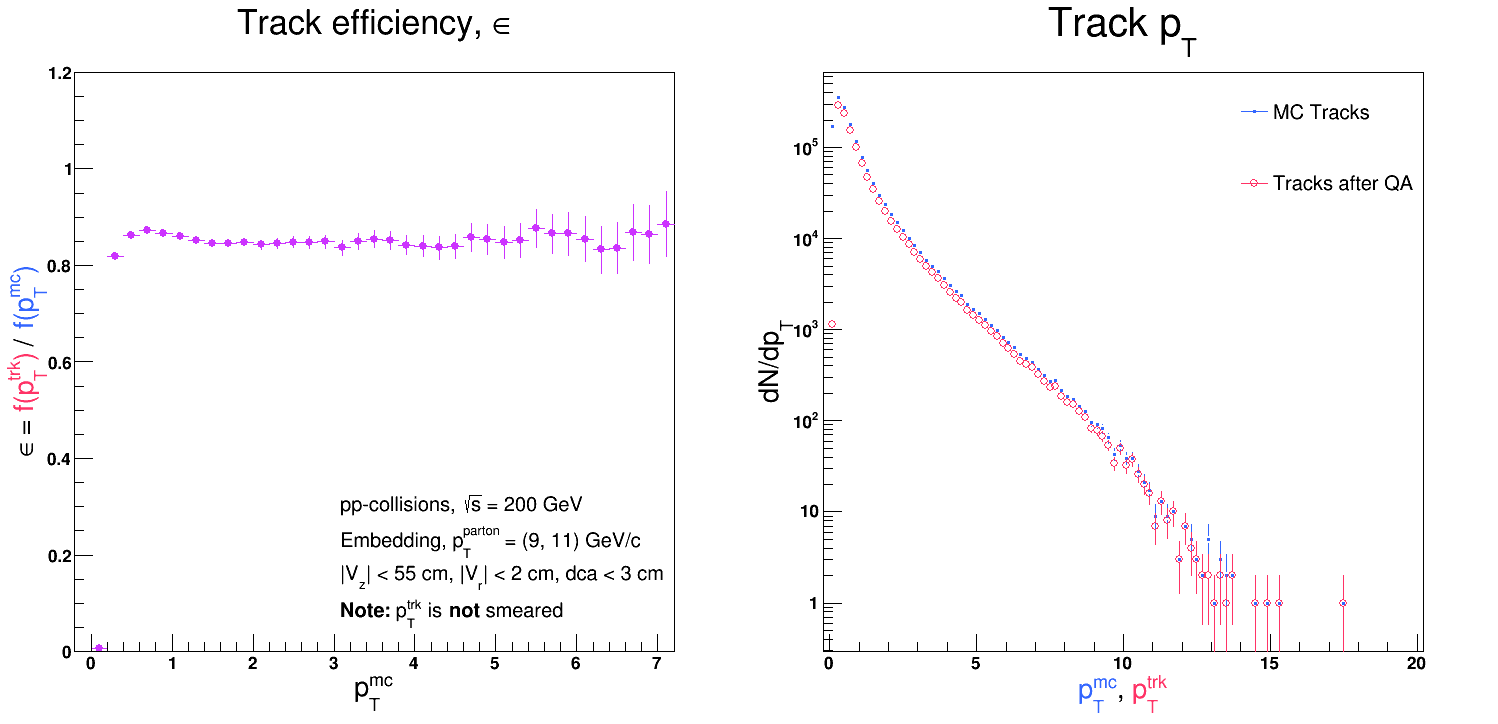
So opening up the dca cut pushes the efficiency up to ~85%. I realized that until now, I've been integrating over all species of hadrons. Looking at just the charged pions (with the same dca cut) yields this efficiency:

The efficiency drops to ~83% at high pT. Up until now, I'd also been requiring 'IdVx = 1' which means that I was considering only the particles which were produced at the initial, primary interaction vertex. However, some of these will decay or undergo further interactions before reaching our detector. To make sure that I was looking at stable, final state particles I required that 'IdVxEnd = 0' (which indicates that the particle does not end at another vertex) rather than 'IdVx = 1'. For all species and a DCA cut of 3 cm, this requirement yields this efficiency:
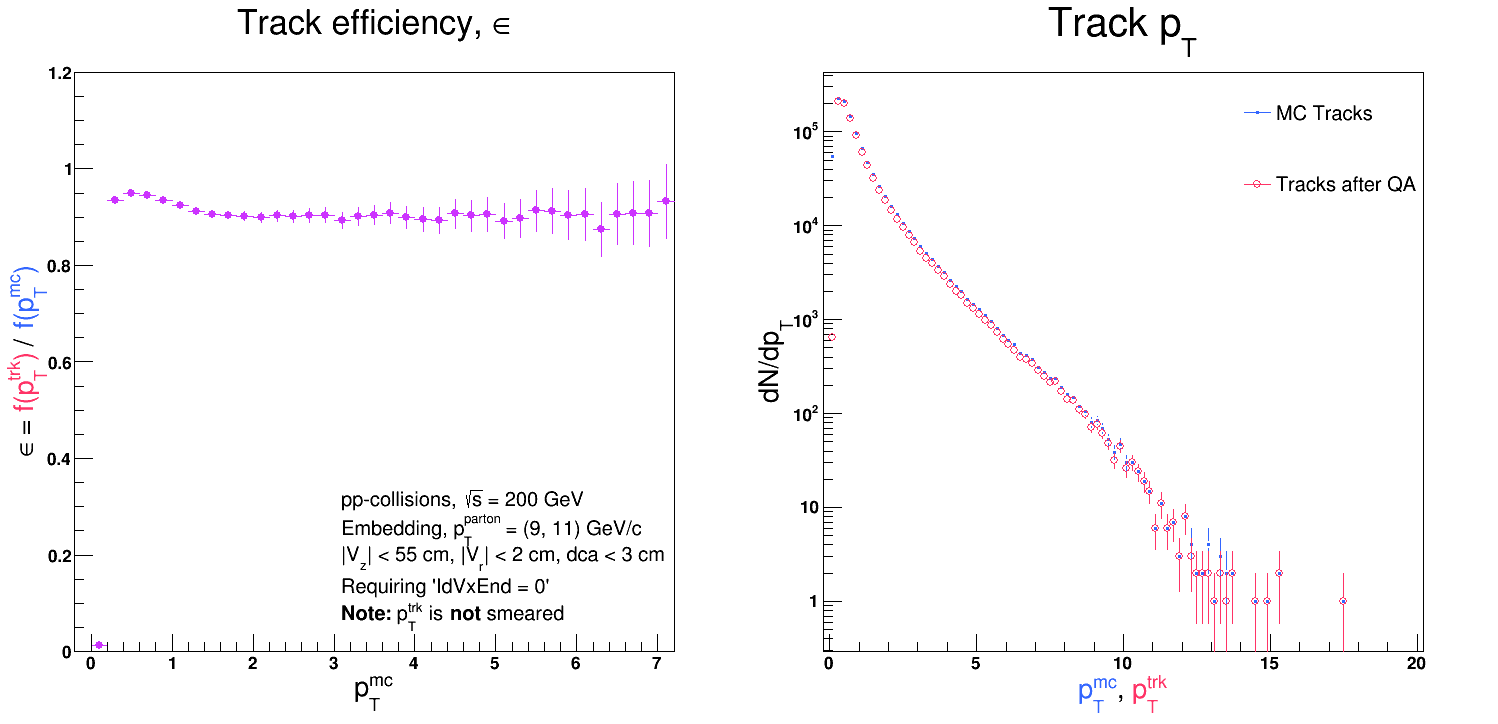
The efficiency jumps up to ~90% at high pT! And now applying the same requirements to just the charged pions:
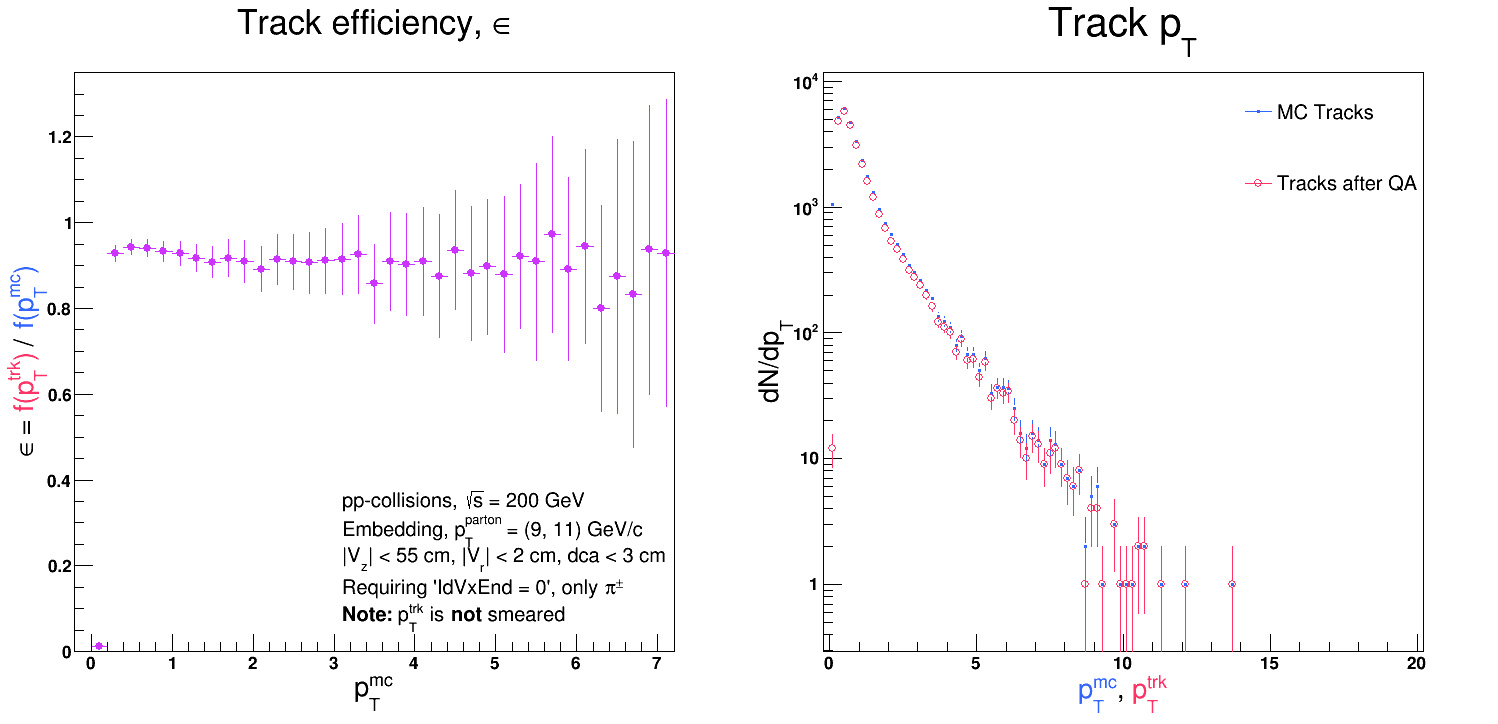
Unsurprisingly, there's very little effect. Here are all of these curves compared against each other:
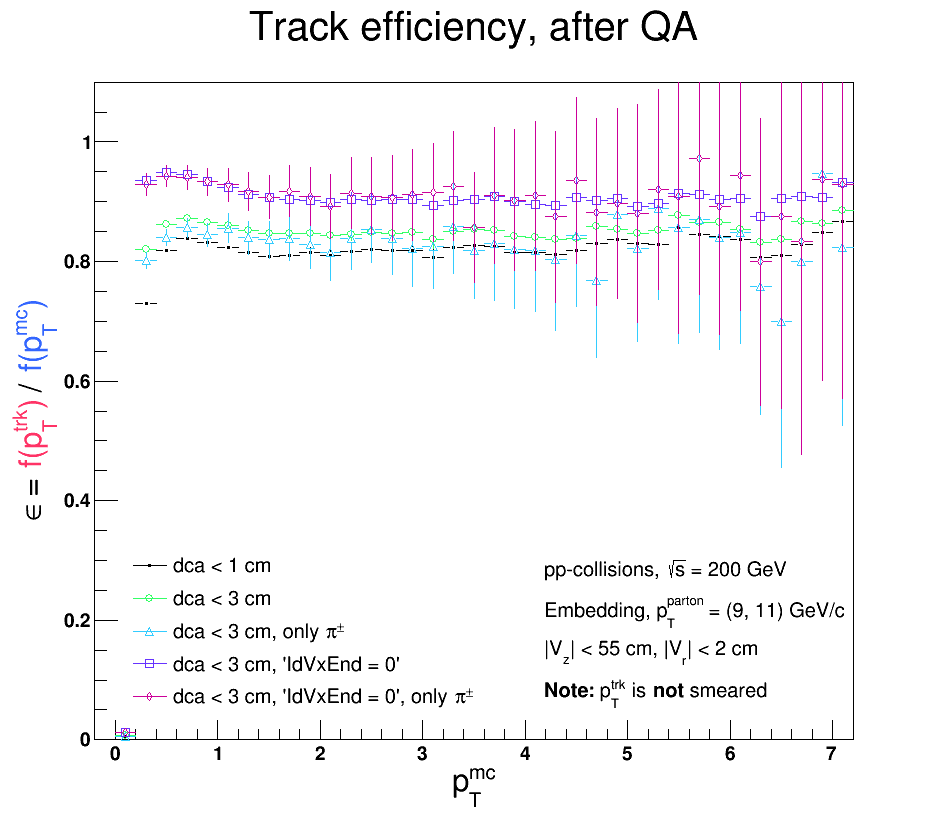
And finally, I tried the combination of DCA < 1 cm, 'IdVxEnd = 0', and looking at only charged pions:

And all of these combinations together:
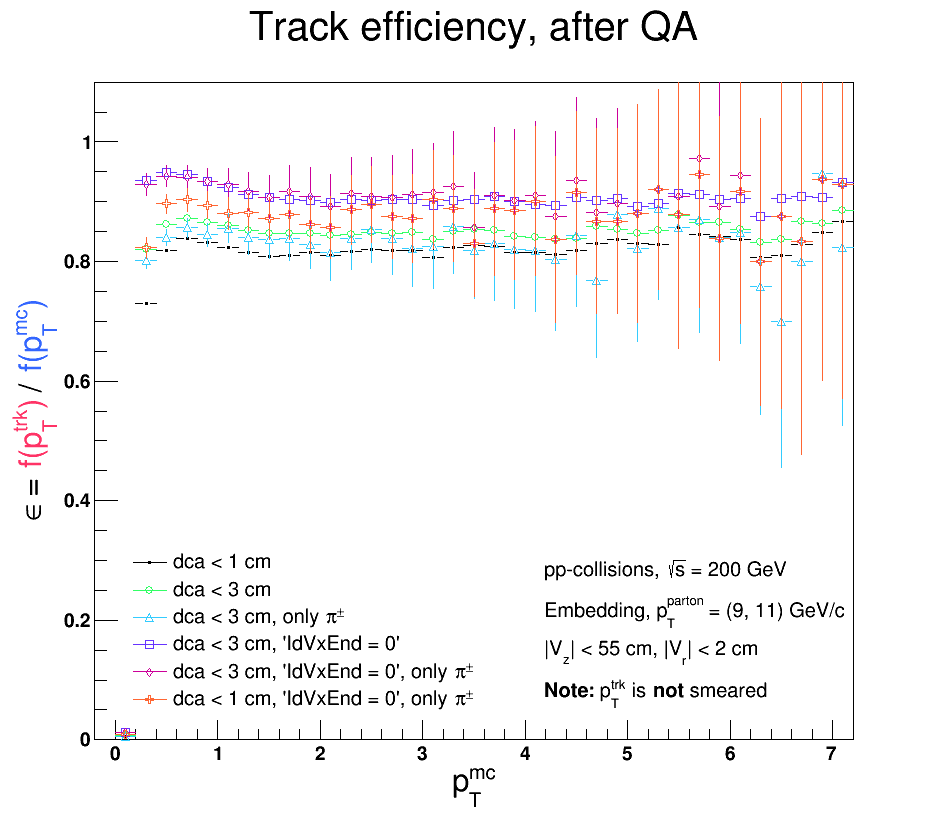
- dmawxc's blog
- Login or register to post comments
